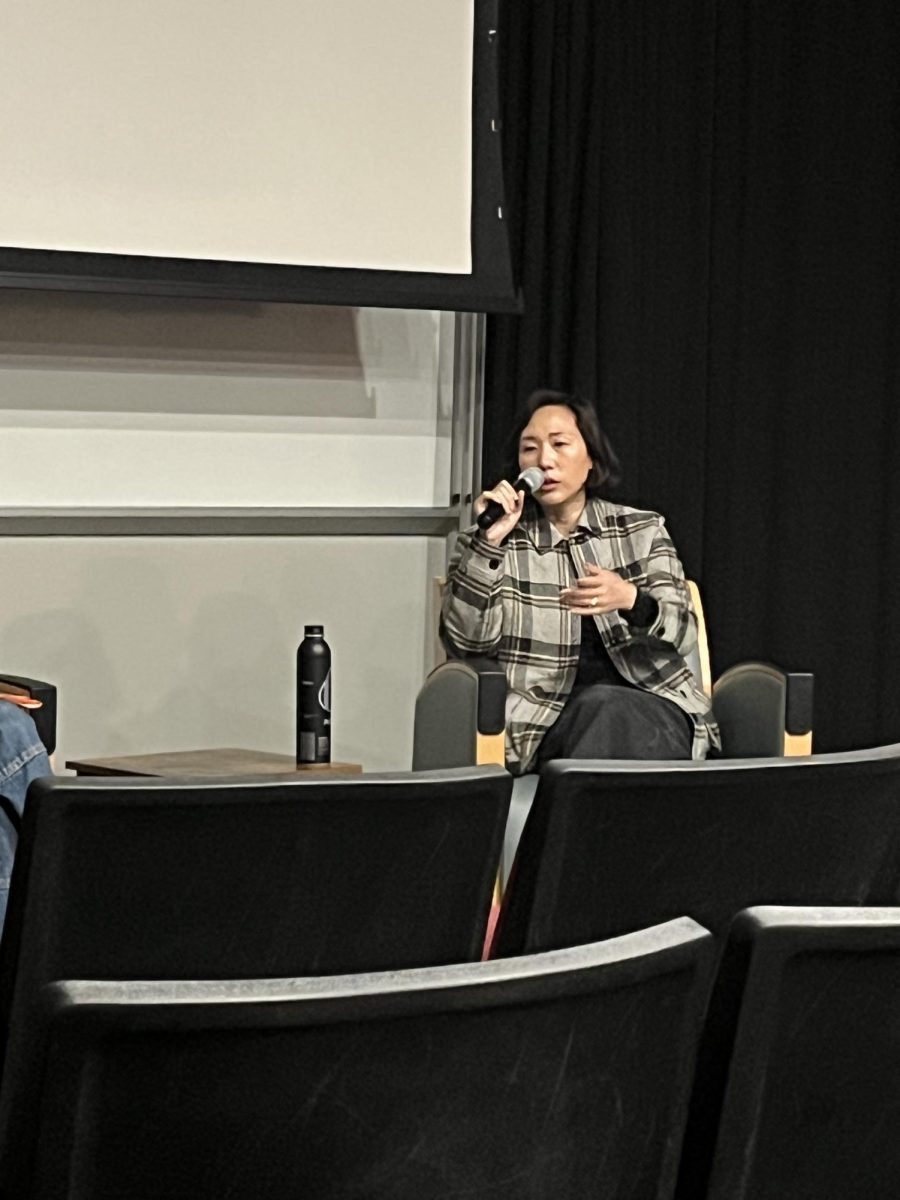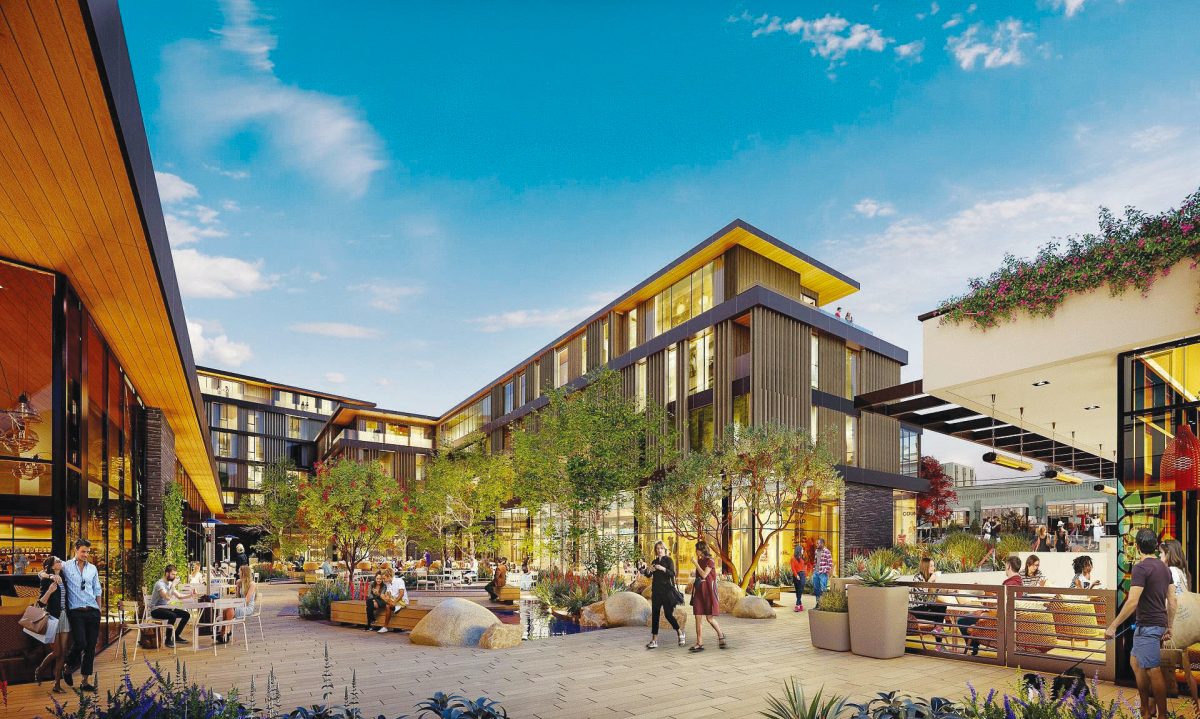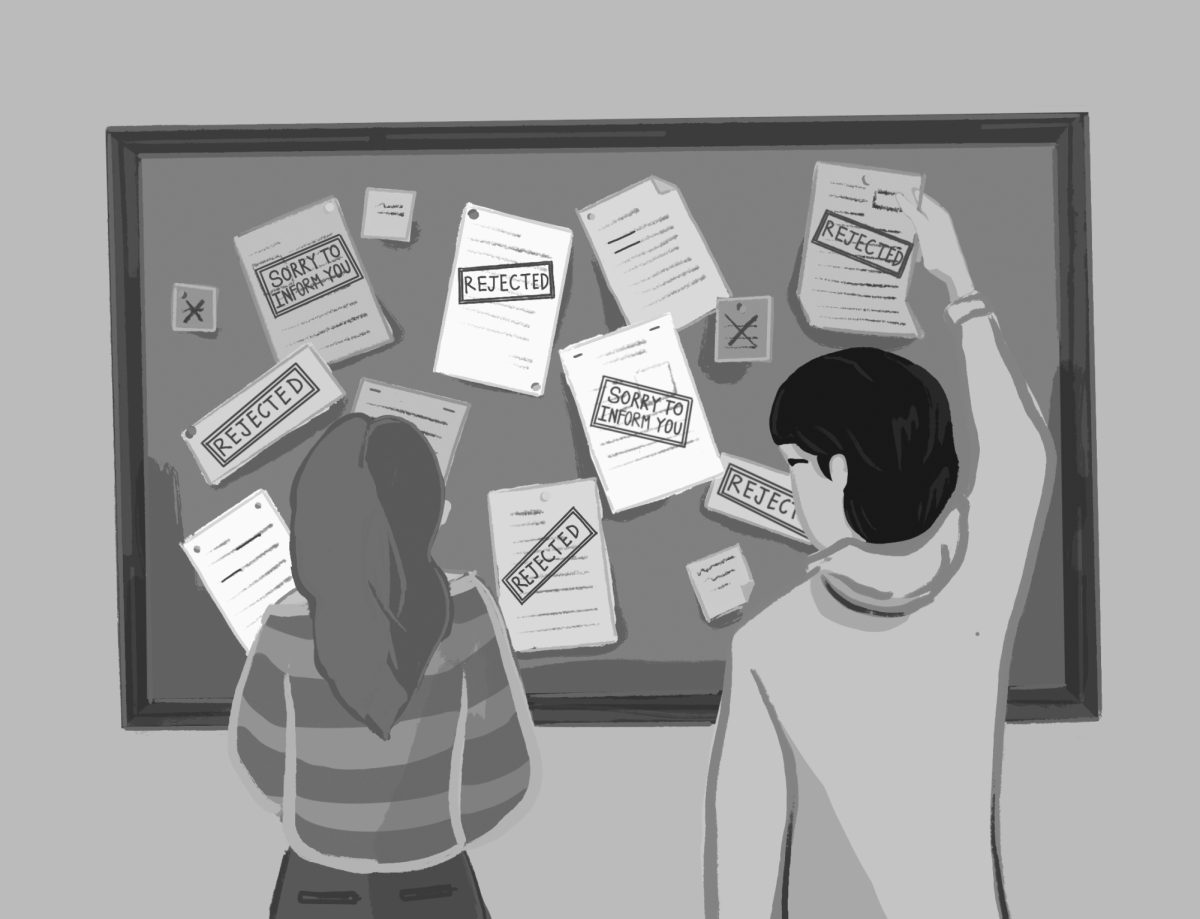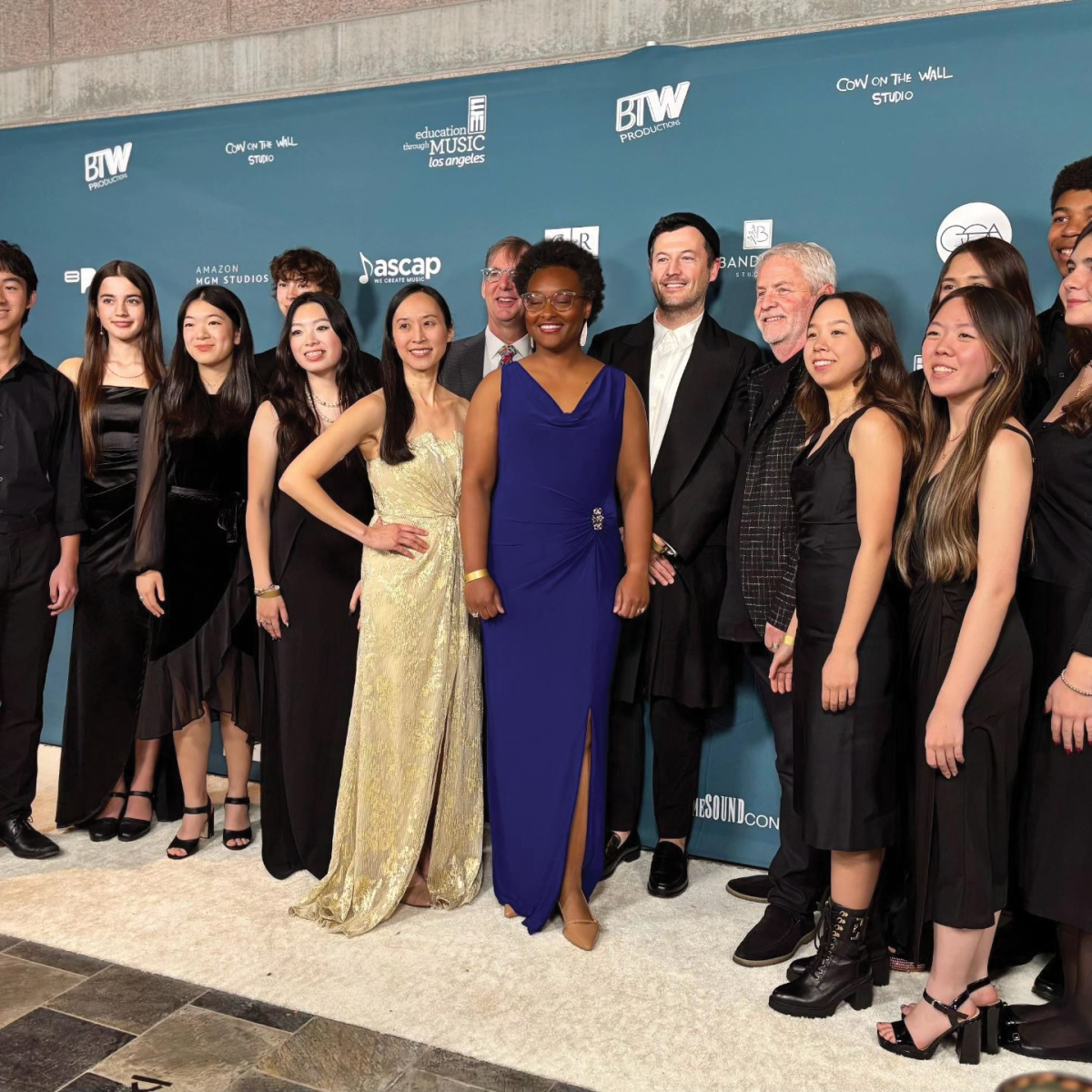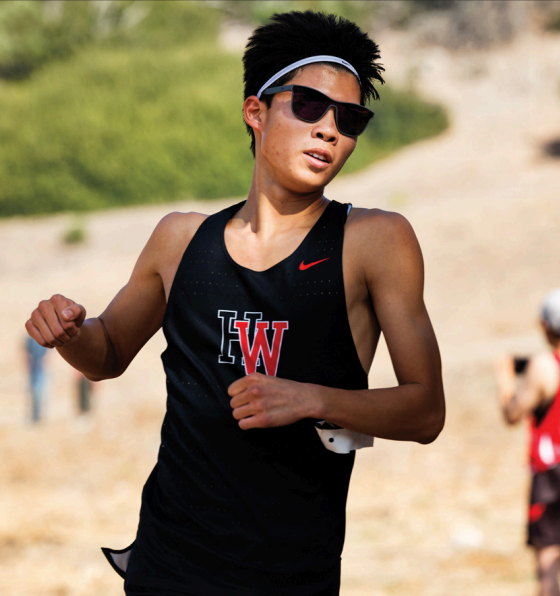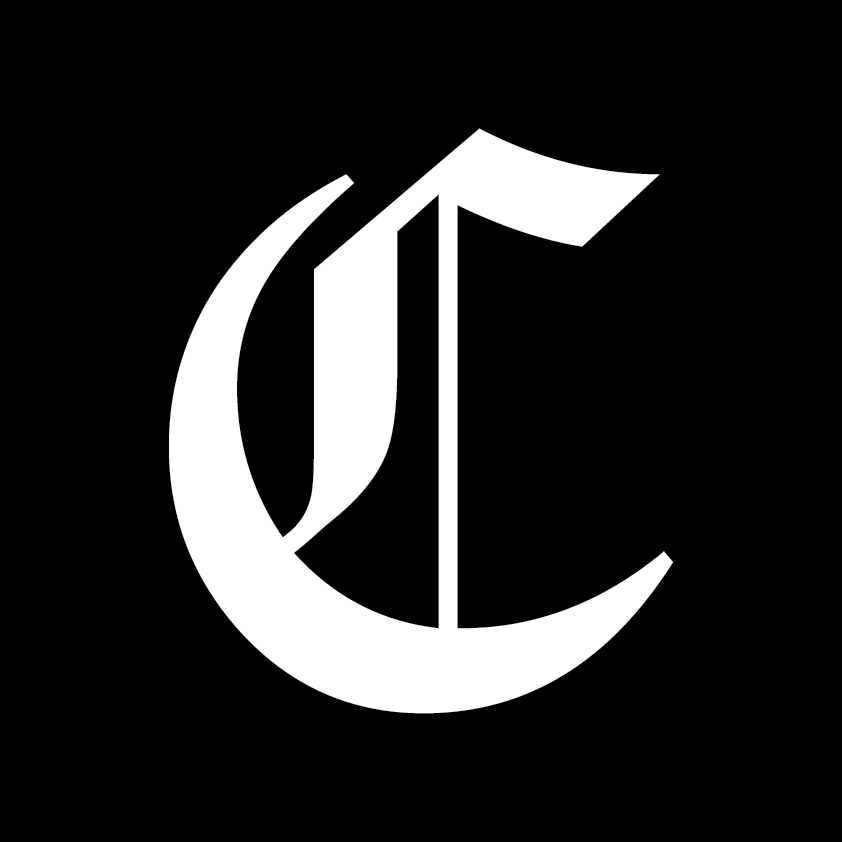One year later, students return to campus following drop in COVID-19 case rates
In between online classes on campus, Chloe Fribourg ’23 and Lauren LaPorta ’23 catch up as they spin together in the chairs outside the visual arts department March 9.
March 25, 2021
Nearly a year after the school’s initial closure due to the COVID-19 pandemic, students and faculty returned to campus March 9, while the school begins to implement the new cohort learning structure and precautionary COVID-19 safety systems. As Los Angeles County continues to distribute vaccinations and coronavirus cases decrease , students will enter a full-scale hybrid model, moving between different classrooms on campus alongside their peers beginning April 19.
Each cohort, assigned based on English classes, is allocated a designated classroom and outdoor space where students are able to attend online Zoom classes and spend free time with their classmates. The specific days in which students can physically attend school in-person are divided by grade level; each grade is assigned two days out of the six-day cycle. As students arrive on campus, they must present the Aux Safety App Screening, Trace App and iHW check-in screen to allow for contact tracing and that the school community is kept safe.
Vita Saffari ’22 said the school made her feel more comfortable by taking extensive efforts to prevent exposure to COVID-19.
“The amount of precautions there are is what really made me feel safe,” Saffari said. “We have to have three different apps and they really do enforce the social distancing; like when we were all out on the Quad during our breaks, there were teachers everywhere reminding us. Everyone has to wear a mask, and just especially how thorough [the school is has] helped me.”
School reopening builds community
Although he initially feared the cohorts would not feel similar to a natural school environment, Max Thompson ’23 said he greatly enjoyed his days on campus and the opportunity to rekindle friendships, an aspect of in-person school he longed for while learning remotely .
“It felt like real school, it felt like everything was going back to normal,” Thompson said. “The best part of [being on campus again] was seeing people that I hadn’t talked to in a while or wasn’t even friends with before. I feel like that’s the experience that I’m missing out on the most: meeting new people or being pushed into those social interactions that you don’t really get into when you’re just on Zoom.”
During their classes on campus, students in art classes are able to utilize visual and performing arts facilities and resources. Sculpture II student Adrienne Usher ’22 said that being able to utilize on-campus resources has completely changed the dynamic of her artistic production.
“I definitely feel more motivated because, before we were allowed back on campus, my sculpture teacher had sent us a box of materials to use, so we were working with really limited materials, so it was really hard to stay motivated when you don’t have access to everything you need,” Usher said. “Being back on campus and being in an environment that’s really conducive to creativity and the production of art really helps keep the motivation up rather than doing [art] in your room where you do your other classes. You just get a lot more inspired.”
New in-person school format to be deployed after break
In a school-wide email, President Rick Commons announced that following spring break, the structure of in-person school will change and that the new plan is a notable shift of progress. A week of complete remote learning will take place in preparation for the new on-campus learning model on April 19, which will see days still divided by grade level, but students who come to campus will then be able to transition from class to class. They will attend Zoom classes in the company of their peers from each course.
Associate Head of School Laura Ross said that in developing the new return-to-campus plan, the school considered a plethora of factors, from the percentage of student body returning to the actively-updating Centers for Disease Control and Prevention (CDC) regulations. Ross said these circumstances will affect aspects of the school day, such as the presence of teachers in classrooms during the hybrid model.
“Whether a teacher would necessarily be in that classroom with [their block’s students] would depend on a variety of factors, and whether that’s the most crucial thing that particular group needs, and how many kids are actually in that classroom together,” Ross said.
Ross said that ultimately, the school hopes to accommodate the safety needs of the community while fostering a socially and academically strong environment.
“We still feel very confident that we want families to make the decisions for themselves that feel right and [that feel right for their] kids,” Ross said. “We’ve had some students that feel like, ‘I’m in my junior year, I really feel like I have a good rhythm at home and I want to keep doing that.’ We want to respect that too, we’re trying to meet everybody’s needs the best we can.”

